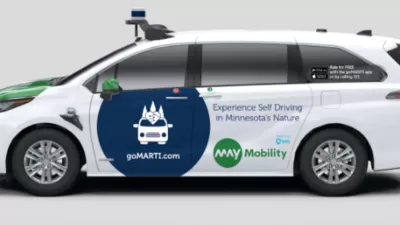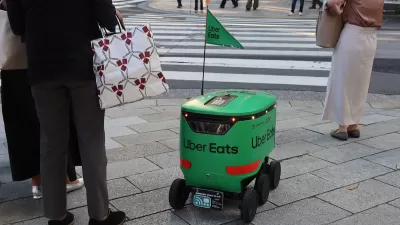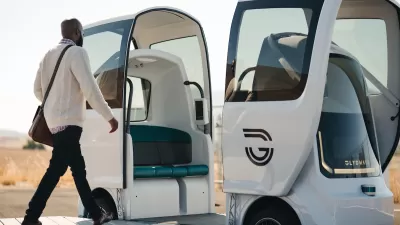The town launched a five-vehicle fleet aimed at improving mobility for residents in the rural community.

Grand Rapids, Minnesota became the first rural U.S. community to test an autonomous shuttle system with the launch of a fleet of five Toyota Sienna vans equipped with autonomous driving technology by May Mobility.
According to an article by H. Jiahong Pan in the Daily Yonder, “These vans took to the road in September, and for the following 18 months they will navigate around Grand Rapids, located in northern Minnesota, in conditions unfamiliar to them: snow, extreme cold, and lots and lots of trees.” The autonomous vans, which come with a human driver ready to take over if needed, are free and can be requested by phone or mobile app and stop at 70 locations.
The program, if successful, could be the model for improving mobility for rural residents, particularly those living with disabilities or the elderly. “Meanwhile, communities struggle to keep up with building and maintaining the infrastructure they need to get around. Rural communities, such as Grand Rapids, often lack sidewalks on many streets, and while they want to build them out, not all of their streets are wide enough to handle them.”
Minnesota’s harsh winter weather could pose challenges to the shuttles, as could the unique needs of riders with disabilities who may require human assistance. “For now, the goMARTI operation is staffed by a number of full and part-time workers, some of whom have backgrounds in computer science.”
Similar programs may become more common in coming years, with $500 million in federal infrastructure funding dedicated to autonomous public transit development.
FULL STORY: In Northern Minnesota, Autonomous Vehicles Are Hitting Rural Roads

Alabama: Trump Terminates Settlements for Black Communities Harmed By Raw Sewage
Trump deemed the landmark civil rights agreement “illegal DEI and environmental justice policy.”

Planetizen Federal Action Tracker
A weekly monitor of how Trump’s orders and actions are impacting planners and planning in America.

Why Should We Subsidize Public Transportation?
Many public transit agencies face financial stress due to rising costs, declining fare revenue, and declining subsidies. Transit advocates must provide a strong business case for increasing public transit funding.

Understanding Road Diets
An explainer from Momentum highlights the advantages of reducing vehicle lanes in favor of more bike, transit, and pedestrian infrastructure.

New California Law Regulates Warehouse Pollution
A new law tightens building and emissions regulations for large distribution warehouses to mitigate air pollution and traffic in surrounding communities.

Phoenix Announces Opening Date for Light Rail Extension
The South Central extension will connect South Phoenix to downtown and other major hubs starting on June 7.
Urban Design for Planners 1: Software Tools
This six-course series explores essential urban design concepts using open source software and equips planners with the tools they need to participate fully in the urban design process.
Planning for Universal Design
Learn the tools for implementing Universal Design in planning regulations.
Caltrans
Smith Gee Studio
Institute for Housing and Urban Development Studies (IHS)
City of Grandview
Harvard GSD Executive Education
Toledo-Lucas County Plan Commissions
Salt Lake City
NYU Wagner Graduate School of Public Service





























